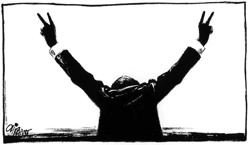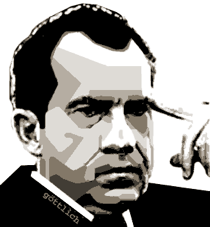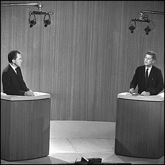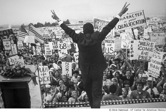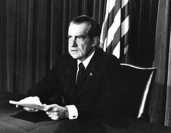


Richard Nixon was one of the most contentious
figures of the last fifty years of American
history. Since he first stepped into the public
spotlight after World War Two, he has constantly
reworked and reinterpreted himself to his observers
in an attempt to influence the future perception of
history. His death on April 22, 1994, provided the
occasion for yet another remaking of Nixon. Since
then, Nixon's image has not halted its spinning on
the potter's wheel of history. His history
continues to be debated, particularly in
cyberspace.
Yet for a brief moment at Nixon's passing, when historians, politicians, commentators, and the public paused to reassess the entirety of Nixon's life, the succession of reworked images, of one "new" Nixon after another, were pieced together - to form a number of coherent pictures - in the eulogies that followed his death. This does not mean that any one of these images of Nixon is right. Nor is there a possibility for finding "consensus", as one historian calls it, on the historical significance of Richard Nixon.
Yet for a brief moment at Nixon's passing, when historians, politicians, commentators, and the public paused to reassess the entirety of Nixon's life, the succession of reworked images, of one "new" Nixon after another, were pieced together - to form a number of coherent pictures - in the eulogies that followed his death. This does not mean that any one of these images of Nixon is right. Nor is there a possibility for finding "consensus", as one historian calls it, on the historical significance of Richard Nixon.

